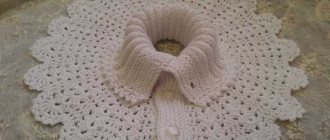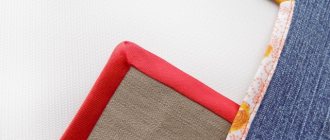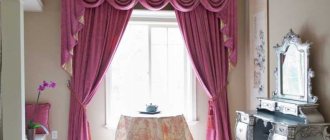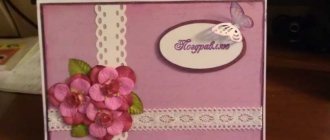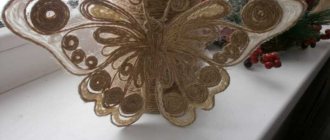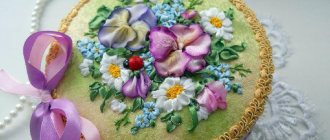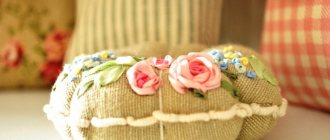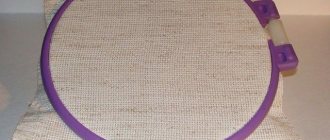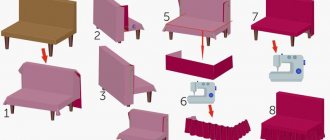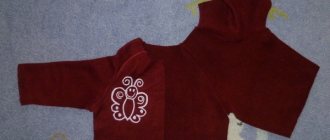Types of pillow embroidery: a brief overview
When it comes to embroidered pillows, most people's imaginations picture small square or rectangular pillows embroidered with a cross. Such thought pillows fit perfectly into any interior, emphasizing its individuality and style. Cross-embroidered pillows are universal - they can be used both as decorative elements and as sleeping pillows. However, it is wrong to think that embroidered pillows are limited to cross stitch only.
A fairly popular type of needlework is embroidering pillows with satin ribbons. Pillows made using this technique look very impressive and noble. Pillows embroidered with beads look very unusual. The shine and shimmer of the beads create a bright and voluminous picture that seems to come to life when the sun's rays hit it. Pillows made using these techniques are very beautiful, but it is not recommended to use them for their intended purpose; they serve exclusively for decorative purposes.
In addition to cross stitch, universal pillows include products made using carpet techniques, as well as those embroidered with decorative stitches. All these techniques do not require careful preparation; anyone can master them.
Botanical cross stitch - embroidery patterns on the theme of wild flowers
Flowers are a universal embroidery option for all times. They can be created in winter to lift your spirits and give the room brightness, summer warmth, in the fall - so as not to fall into depression. There are many schemes on the Internet dedicated specifically to colors. Various weeds, grasses, and dandelions, both ripe and April, are successful.
Such things contain internal energy, which is a strong talisman for our home.
A pillow embroidered yourself speaks about the skills and tastes of the craftswoman, her skill and desire to create something beautiful for her interior.
Beautiful and bright sofa cushions with flowers transform a gray interior. Things made with your own hands protect you from everything bad that you can bring into your home from the street. Therefore, before, an embroidered pillow was in every home. If the pillow was small, then it was called a dumka. Linguists still cannot come to a consensus why the accessory was called that way. Perhaps because it was pleasant to rest on a pillow that was embroidered with your own hands, to unload the psyche, and when the brain is relaxed, it is easier to think.
Our ancestors had a peculiar cult of embroidery. The girl had to learn this art from childhood.
Cross stitch pillows
The popularity of cross stitch is explained not only by the magnificent appearance of the finished products, but also by the simplicity of the technique itself. The essence of cross stitch is to apply two cross stitches to the base fabric in a certain sequence, forming a pattern or ornament.
Despite the simplicity of the technique, the result invariably pleases and gives an incentive to create again.
To embroider a pillow with a cross, no special preparation is required, and the materials and tools needed are the simplest.
First of all, you need to select the base fabric for embroidering the pattern. We recommend choosing a material with clearly visible thread weaves, such as cotton, calico or linen. Even more convenient is a special canvas for embroidery, which is used as Stramin or the equally popular Aida.
Stramin is a canvas made of cotton, treated in a special way, giving it special rigidity. In appearance, stramine is a thread mesh with fairly large cells. The drawing is applied to the canvas in advance, so even inexperienced needlewomen can easily work with it. Pillows embroidered on stramine canvas have texture and volume.
Aida is also a natural cotton backing for cross stitch. Its peculiarity lies in the special interweaving of threads that form holes, which are the corners of the squares - a needle is inserted into them during embroidery. Crosses made on Aida canvas turn out neat and of the same size.
When selecting Aida canvas, you should pay attention to such an indicator as count (the number of cells per inch). The smaller the canvas number, the larger the cell and, accordingly, the larger the cross. Experienced craftswomen advise starting with Aida-14, the cross will be large enough, the embroidery process will not strain your eyesight and will not tire you.
Cross stitch allows the use of a wide variety of threads: from ordinary cotton floss to melange. The appearance of the finished product depends on the choice of threads. The use of wool threads makes the product textured, and silk floss gives the image a realistic appearance. When embroidering the design of the front part of the pillow, be sure to leave about two to three centimeters on each edge for attaching the back part of the pillow.
Most often, the finished pillow is sewn on three sides, turned inside out, stuffed, and the fourth side is hand-sewn so that it can be easily ripped apart if necessary. Another option is to use a zipper, which can be located either on one side of the pillow or in the middle of the back of the product.
Thus, cross-stitching pillows is a fascinating activity, accessible even to novice needlewomen.
Ready-made kits for embroidering pillows
Cross-stitched sofa pillows
Mostly sofa products are embroidered with cross stitch. Pillows are embroidered using exactly the same principle as any other cross-stitch work. Embroidered pillows look great on a sofa, armchair or ottoman.
To embroider a sofa cushion, you need to have a pattern, in addition, you need to prepare the following materials:
- canvas or stramin fabric;
- a special marker used for marking the outline;
- ordinary scissors;
- embroidery pattern;
- needle;
- magnifying glass if there is a small diagram.
To embroider a pillowcase with a cross, you need to follow simple steps. How to make a pillow with cross stitch with your own hands:
- Thread the thread into a needle and fasten the thread to the canvas.
- Next, you need to separate one thread from the bundle, fold it in half so that both the loop and the tail are at the bottom, and thread the two ends that are connected into a needle.
- For the correct procedure for securing the thread to the canvas, we insert the thread from the wrong side to the front side, while the tail remains on the wrong side.
- We make a stitch obliquely, then bring the thread back to the wrong side, picking up the loop with a needle and tightening it. We fasten the loop neither loosely nor tightly.
- We bring the needle “on the face” again, and we get the first cross. We make all other crosses using the same principle.
Features when working with outline and diagram
All patterns are divided into squares - pillowcase embroidery is no exception. Therefore, it is necessary to draw exactly the same squares on the canvas. With this marking it will be very easy and simple to embroider the pillow.
As a rule, they always start embroidering from the center of the canvas. To determine the center point, the canvas fabric needs to be folded in half, then in half again. At the point of intersection of the folding lines, we mark the center of the outline and begin to draw the squares we need. Now we begin the embroidery process in the same way as we embroider a picture or some other product.
Embroidering pillows with decorative stitches
Even a child can master embroidering pillows with decorative stitches. This technique is distinguished by the fact that a fairly large number of types of seams are used, which makes the embroidery process not boring. Due to the fact that in this technique the pattern occupies only part of the front fabric of the pillow, the time spent on work is significantly reduced. The work requires standard tools and materials (base fabric, needle, thread, hoop).
The finished pillow is smooth and pleasant to lie down on and relax. The appearance is distinguished by its sophistication and ornate patterns. The choice of embroidery pattern is limited solely by the imagination of the craftswoman.
Original embroidery for sofa cushions
If you want your living room to be transformed, but at the same time you don’t have the time or money to renovate it, you can add a few bright accents that will “revive” this room. Embroidering pillows can be an excellent solution because these small “accessories” not only serve to decorate the room, but also provide you with the proper level of comfort. So, for work we need:
- pencil;
- ruler;
- hole puncher;
- scissors;
- needle;
- padding polyester;
- yellow knitting threads;
- a piece of black fabric (32.5 * 32.5 cm);
- green fabric from which we will sew the pillow itself.
Let's start embroidering the pillow! First you need to make markings on black fabric. In this case, you should get a neat grid consisting of squares, each side of which is 1 cm. Then, stepping back 2 cm from each edge, you will need to make small holes at the intersection of all lines using a hole punch: We don’t need an embroidery pattern, so how we will embroider 2 large English letters: “Hi”. To make the embroidered pillows brighter and more unusual, we chose yellow threads that will go well with the black base. After we finish working on the embroidery, we will need to attach the base to the green fabric and cut out 2 parts according to its size. Then all we have to do is sew all three parts and fill the pad with padding polyester. It is worth noting that embroidering pillows is a creative process, so you can safely experiment and create your own unique patterns and original inscriptions
Such cute embroidered pillows will undoubtedly attract the attention of your guests and make the interior of your room special and exclusive.
Carpet pillow embroidery technique
The carpet technique of embroidering pillows allows you to get a very impressive product, while it is easy to master and does not require a large amount of materials and tools.
The essence of the technique is to create fluffy pile or terry loops of any required length. If, when cross-stitching or decorative stitches, we get a smooth product, then the pillow using the carpet technique will be voluminous, very soft and fluffy, which children will appreciate. Manufacturers offer a wide range of carpet embroidery kits specifically for children.
Thick acrylic threads are used for embroidery in carpet technology; they are durable and retain their original appearance for a long time. The base is Stramin or linen. To create a pattern, a special needle or hook with a lock is used.
The only drawback of this technique is that creating a pillow will take quite a long time. At the same time, even this disadvantage can be considered as an advantage: embroidery using carpet technology allows you to develop perseverance and patience.
Cross stitch techniques
There are several ways to apply crosses to fabric.
The first method is to embroider the entire cross. Using this method, crosses are applied both vertically and horizontally. Let's get acquainted with the vertical execution of the stitch.
Vertical stitch method
- The procedure begins by inserting a needle and thread into the upper right hole.
- Next it is stitched diagonally to the lower left point.
- We climb up from the inside out.
- We descend diagonally into the lower right hole.
- After one point we go up.
- The thread passes diagonally into the lower left hole of the next square.
- The following steps are repeated.
Popular articles Brooch made of satin and satin ribbons
On the wrong side of the work, you get two even straight lines parallel to each other.
Horizontal stitch method
Crosses are embroidered horizontally in the following steps:
- The stitching starts from the top right to the bottom left hole.
- From the lower left corner it goes to the upper left point.
- Next, the needle and thread are inserted into the lower right hole.
- The needle comes out diagonally at the top right point.
- The procedure is repeated again.
While working, we observe the direction of the stitches - they should lie in one direction, then you will get an aesthetically beautiful and correct pattern. The reverse side of horizontal embroidery is distinguished by oblique lines.
Step-by-step execution of oblique stripes in one direction, then in the other. This method is performed in the following steps:
- As in the technique described above, work begins from the right-left hole, descending diagonally into the lower left hole.
- We go up along the wrong side.
- All manipulations are repeated until the end of the row.
- The same is done in the opposite direction.
The reverse side of this embroidery is distinguished by small stitches.
Having learned how to make cross stitches, we begin to embroider wonderful sofa accessories. Cross-stitched items look original in any room of a residential building
Cushions are chosen to match the furniture, wallpaper or curtains and represent a bright accent that attracts attention.
Sofa cushions are decorated with a variety of ornaments chosen by the needlewoman. Often craftswomen use a pattern of embroidered chains closed together. It is in this product that the main, central area of the pattern is combined with a border on the side. The embroiderers also depict flowers in the center, and the edges are decorated with border patterns. The combination of various images looks quite good and attractive.
Embroidery of pillows with ribbons
Ribbon embroidery is a very beautiful type of needlework that allows you to create exclusive products. At first glance, embroidery with satin ribbons seems quite complicated, but you just need to practice a little, and this technique will completely stop intimidating, you will gain confidence in your abilities and the desire to create beautiful pillows with a variety of plant or animal subjects.
To start working in this technique, you need a standard set of tools and materials: a sharp needle with an elongated eye, mesh fabric, satin ribbons and a hoop.
To create a pattern, a variety of seams are used: stem stitch, needle stitch, chain stitch, eyelets, etc. With their help, various three-dimensional figures are created - flowers, insects, animals.
Another advantage of pillows embroidered with ribbons, in addition to their mesmerizing beauty, is that for the base you can use not only the usual canvas, but also other materials, for example, velvet or silk. Creative experiments with base materials allow you to create a truly unique product.
Embroidering a pillow with beads is a painstaking work that everyone will appreciate
Bead embroidery of a pillow is a special and difficult art that requires attentiveness and perseverance. If you're not yet a beading guru, you can try a mixed technique: cross-stitching a pillow and then adding some interesting accents with beads.
Fabric for bead embroidery should be selected according to the type of canvas, with a visible weave. The needle should have a small eye (check first that even small beads can be threaded onto it). Each bead is sewn with thread in the same color using a half-cross stitch. The stitch is very simple, even beginners can handle it, but it is very important to sew the beads evenly.
Most often, beads are not used “alone” - they are used to decorate cross-stitch, satin stitch, and satin ribbon embroidery. However, craftswomen can try to embroider a pillow exclusively with beads. To do this, it is necessary to use a special diagram (bought in a store, printed from the Internet, or made independently using a special program), which will help you not make mistakes when counting the number of beads.
It is worth choosing beads for work that are of good quality and of approximately the same size. This will greatly facilitate the embroidery process and make it even more beautiful.
